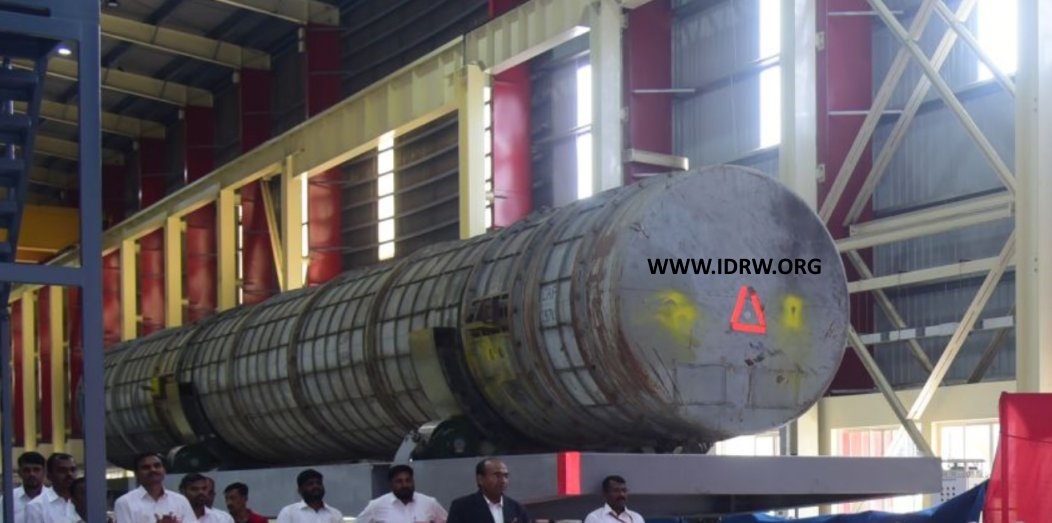SOURCE: IDRW.ORG TEAM

In recent days, the internet has been buzzing with discussions and claims surrounding a remarkable 70-ton Rotation Cum Resting Fixture (RCRF) canister, crafted by Electropneumatics and Hydraulics (I) Pvt. Ltd. The canister, constructed from high-strength steel and featuring an electro-mechanical high-precision leveling system, has become the subject of intense curiosity and speculation about its intended use.
While the authenticity and impressive nature of the canister are undeniable, divergent opinions have emerged within the Indian Open Source Nuclear Information Technology (OSNIT) community regarding its purpose. Some assert that the canister is specifically designed for the Agni-VI intercontinental ballistic missile (ICBM). In contrast, others challenge this assertion, pointing out that the Agni-V Mk2 missile, developed using composite materials, has successfully reduced its weight from 55 tons to 50 tons. This faction contends that the canister may be associated with the Agni-VI program, given its substantial size and capabilities.
Conversely, another school of thought suggests that the canister might be earmarked for an underground silo under development for the storage of long-range ICBMs. The concept of an underground storage facility adds a layer of complexity to the speculations, as it aligns with strategic considerations for safeguarding and deploying high-caliber missiles.
As the debate unfolds, it becomes apparent that the Electropneumatics and Hydraulics’ 70-ton canister has become a focal point of interest not only for defense enthusiasts but also for experts closely monitoring India’s strategic capabilities. Whether designated for the Agni-VI ICBM or a sophisticated underground storage facility, the canister’s unveiling raises intriguing questions about the trajectory of India’s missile development programs and the evolving landscape of its defense infrastructure.
- Purpose: The RCRF is primarily used for the Agni-V program, specifically for the canisterized missile’s resting and safe securing. This ensures the missile remains stable and protected during storage and transportation.
- Distortion Prevention: The RCRF’s rotation capability helps prevent the solid propellant from distorting due to gravitational forces over time. Every month, the missile is rotated 120 degrees to distribute the weight evenly and maintain its structural integrity.
- Inter-shop Movement: The RCRF also facilitates short-distance movement of the Agni-V canister between different production and assembly areas within the manufacturing facility.
Technical Specifications:
- Material: E350C HSLA steel, known for its high strength and low-temperature toughness.
- Levelling System: An electro-mechanical system ensures precise and accurate levelling of the RCRF, crucial for maintaining stability during rotation and storage.
- Cold Vulcanization: This unique technique, implemented for the first time in India for such a large structure, creates strong and durable joints between different components of the RCRF.
NOTE : Article cannot be reproduced without written permission of idrw.org in any form even for YouTube Videos to avoid Copy right strikes. Websites doing illegal reproductions will get DCMA and Legal Notices.